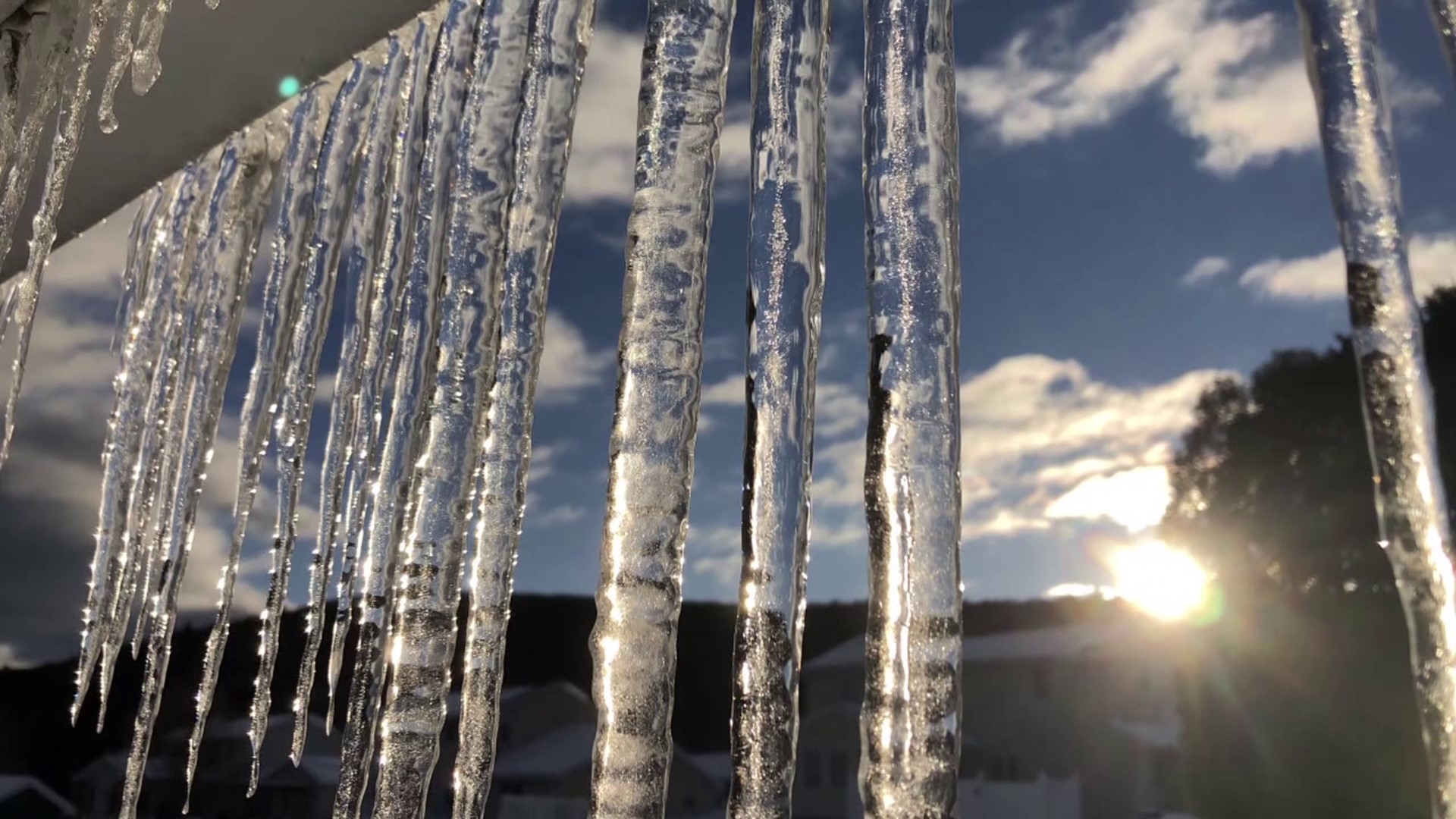PENNSYLVANIA, USA — After a cold, sunny weekend, we could not help but notice the number of beautiful photos of icicles we received from you.
Icicles form when the air temperature is below freezing. With snowpack on a roof, enough sunshine this time of year can do the job or rising heat from inside the home into the attic.
"The water droplets don't really have anywhere to go. They run down the roof. They're kind of insulated from the cold air under that snowpack. But once they get to the gutters on the edge of the roof and they hit that cold air, they freeze solid," said National Weather Service Meteorologist Michael Jurewicz.
And then gravity does the rest of the work, pulling icicles down over time. They progressively grow longer and get heavier.
The weight of icicles can pull your gutters down, but a falling icicle creates other problems for whatever happens to be underneath it.
"Dent vehicles pretty badly or even crack windshields, crack windows on homes, even unfortunately, you get injuries to people every once in a while," Jurewicz said.
Those dangers might be obvious. But the water build-up behind the icicles can also create what's called ice damming.
"The ice actually forms a barrier to the water that's running under the snow, and at some point, the water has nowhere to go, and if that water stays for a long enough period of time over a roof, and maybe the roof is older, isn't as robust as it used to be, that water can kind of soak into the roofing materials and the water can even make its way into attics and homes," Jurewicz explained.
With above-freezing temperatures in the forecast this week, icicles will start to melt on their own.
Experts say it can be dangerous to knock them down yourself, so the best thing to do is just look up.
Check out severe weather tips on WNEP's YouTube channel.

